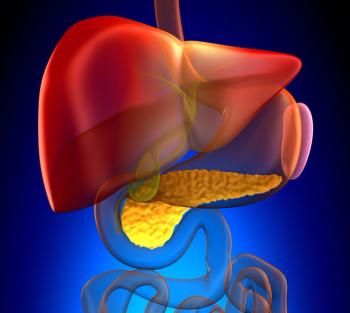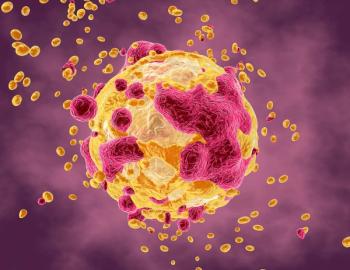
Nurse-Led Telehealth Displays Feasibility in Ovarian Cancer Follow-Up
Although the study was underpowered due to a small sample size, non-significant improvements in functional and social well-being occurred with MOST-S26.
Nurse-led telehealth follow-up using the Measure of Ovarian Symptoms and Treatment Concerns (MOST-S26) patient-reported index exhibited feasibility for patients with ovarian cancer following completion of chemotherapy, according to findings from a phase 2 trial (ACTRN12620000332921) presented at the
Specifically, although the study was underpowered, with 22 patients having undergone nurse follow-up vs 11 having undergone standard-of-care (SOC) oncology clinic follow-up, findings suggested that nurse-led follow-up was associated with high patient and nurse satisfaction without any apparent impact on diagnosis of recurrence. Furthermore, non-significant improvements in functional and social well-being, as well as role and social functioning, were observed. The study authors suggested that the findings warranted the evaluation of the telehealth method using MOST-S26 in a larger phase 3 trial.
Additionally, after a median follow-up of 18 months, the median time to recurrence was not reached (NR) with nurse-led telehealth follow-up vs 21.4 months with SOC (HR, 0.63; 95% CI, 0.17-2.36); the risk of recurrence per month was 1.6% (95% CI, 0.6%-4.2%) in both arms. Additionally, no referrals were observed in the SOC arm vs 16 (72.7%) in the nurse-led telehealth arm. Referrals included 5 (22.7%) to a clinical psychologist, 1 (4.5%) to a sexual counsellor, 2 (9.0%) to a dietician, 4 (18.2%) to a physiotherapist, and 4 (18.2%) to an occupational health specialist.
Furthermore, 3 overarching themes emerged among response data compiled from 14 women with ovarian cancer and 6 study nurses. The first, classified as key patient-centered benefits, included:
- convenience
- a sense of feeling cared for
- personalized, holistic care
- prompt symptom management
- and a dedicated space for patient disclosure of experiences and emotions
Additionally, a patient reported, “I just [have not] been abandoned after going through treatment. That’s a nice thing to have that connection.”
The second overarching theme, identified as challenges to delivery from nurses’ perspectives, included:
- a lack of transparent referral pathways for serious symptoms
- an inability to observe physical cues to inform care
- challenges to rapport establishment
- an emotional impact on nurses when presented with disease recurrence
- and difficulties for patients with low literacy or language barriers
One nurse expressed, “It does make it harder to get that rapport sometimes when you [cannot] see them face to face.”
Furthermore, the last overarching theme established the usefulness of MOST-S26 in supporting consultations, with the authors claiming that nurses “reported MOST-S26 provides a useful tool to guide consultations and referrals; detect early signs of recurrence; track symptoms over time and flag symptoms for discussion; and help patients reflect on their symptoms.”
Another nurse reported that MOST-S26 gave structure to their consult and helped to focus on symptoms that were potentially impactful or problematic.
“The study suggests that nurse-led telehealth follow-up for ovarian cancer using the MOST is feasible, has high patient and nurse satisfaction, and does not appear to delay diagnosis of recurrence,” Paul A. Cohen, FRANZCOG, MD, clinical professor in the Division of Obstetrics and Gynaecology and Clinical Research Fellow at the Harry Perkins Institute of Medical Research of The University of Western Australia, wrote in the publication with study coinvestigators.1 “Maintenance therapy with PARP [inhibitors] does not preclude nurse follow-up. Barriers and challenges to changing attitudes to nurse-led follow-up [emerged].”
Across 6 Australian sites, patients 18 years and older with stage I to IV, high-grade serous, grade 3 endometroid, clear cell, or mucinous ovarian cancer with an ECOG performance status of 0 to 2 and normalized CA125 at the completion of chemotherapy were eligible for trial enrollment. Patients were initially stratified based on receipt of PARP inhibition or bevacizumab (Avastin) and were subsequently randomly assigned 2:1 to undergo nurse-led telehealth with MOST-S26 or routine clinic follow-up once monthly or every 3 months.
Among patients in the investigational (n = 22) and SOC cohorts (n = 11), the median age was 62 years (range, 32-79) vs 62 years (range, 27-76). Most patients had an ECOG performance status of 0 (32.0% vs 54.5%) or 1 (68.0% vs 36.5%), stage III disease (54.5% vs 54.5%), grade 3 disease (86.4% vs 90.9%), and serous histology (90.9% vs 81.8%). A total of 63.6% vs 72.7% of patients had wild-type germline status, 59.1% vs 63.6% had undergone primary surgery, 40.9% vs 36.4% received neoadjuvant chemotherapy, 40.9% vs 45.5% underwent maintenance therapy, and 45.5% vs 45.5% had R0 margins.
The primary end point of the study was emotional well-being at 6 months. Secondary end points included feasibility and safety, health-related quality of life, patient satisfaction, fear of recurrence, referrals for symptom management, acceptability, and progression-free survival.
References
- Cohen PA, Obermair A, Gebski V, et al. A phase II randomized trial of nurse led telehealth follow-up including patient reported outcomes using the MOST (Measure of Ovarian Symptoms and Treatment Concerns) vs routine clinic based or telehealth follow-up after completion of chemotherapy in patients with ovarian cancer. Presented at: 2025 ESMO Congress; October 17–20, 2025; Berlin, Germany. Abstract CN88.
- Cohen PA, Obermair, Gebski V, et al. A phase II randomized trial of nurse led telehealth follow-up including patient reported outcomes using the MOST-S26 (measure of ovarian symptoms and treatment concerns) versus routine clinic based or telehealth follow-up, after completion of chemotherapy in patients with ovarian cancer. Ann Oncol. 2025;36(suppl 2):S1650. doi:10.1016/j.annonc.2025.08.1166
Newsletter
Stay up to date on recent advances in the multidisciplinary approach to cancer.






















































































